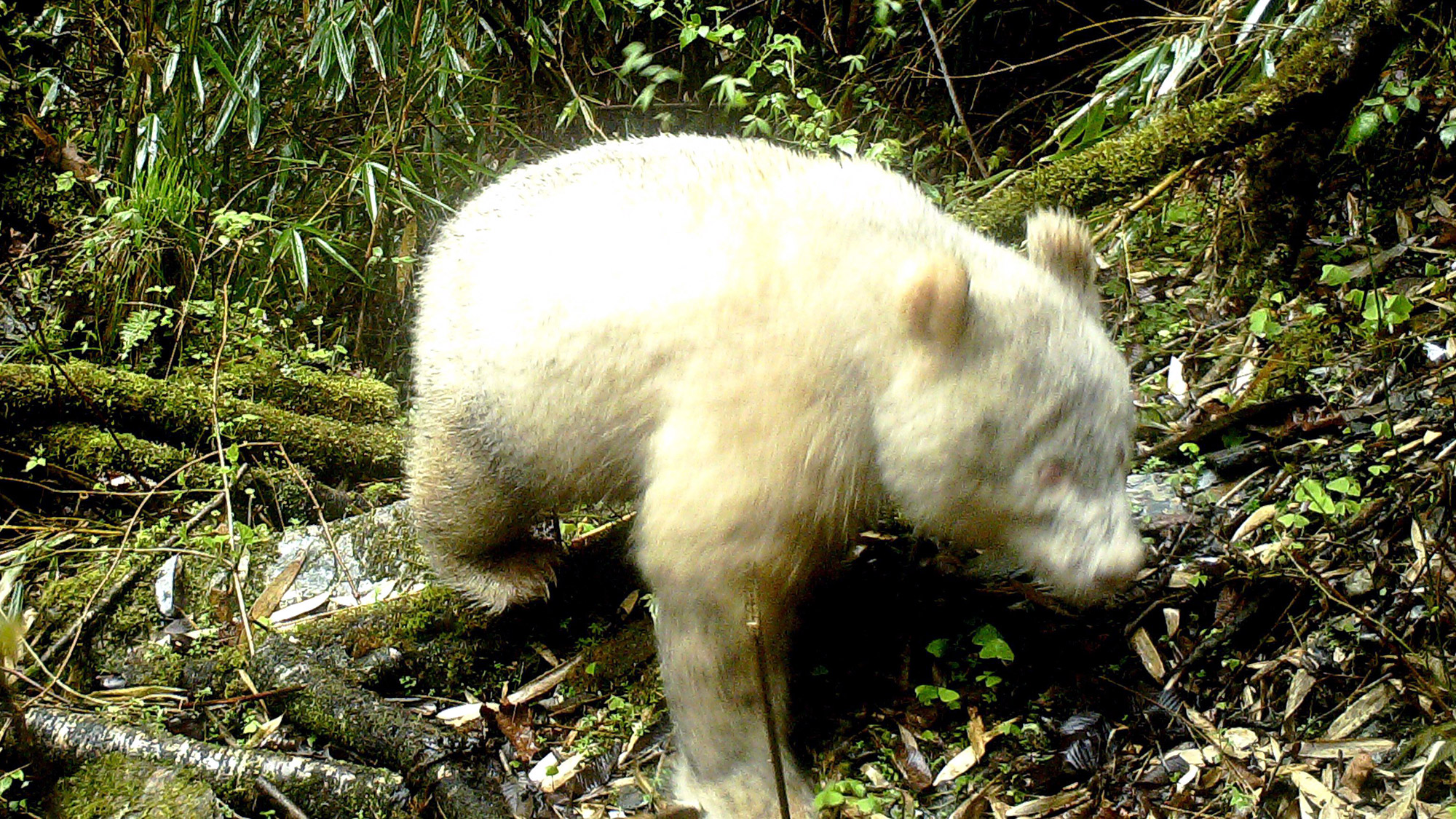Albino Panda Spotted in the Wild for the First Time

Pandas are known for their furry black-and-white markings, so wildlife experts were stunned to see an all-white panda with red eyes tramping through a bamboo forest in China last month.
This wild giant panda (Ailuropoda melanoleuca) is the first known albino of its kind.
"Judging from pictures, the panda is an albino, 1 to 2 years old," Li Sheng, an assistant professor in conservation biology at Peking University who specializes in bears, told China Central Television (CCTV), a Chinese news outlet. [The Pink and White Album: Amazing Albino Animals]
Researchers snapped a photo of the rare bear using an infrared camera (a device that makes images that show differences in heat) in the Wolong National Nature Reserve, located in China's Sichuan province. The photo was taken on April 20, but wildlife officials announced the finding on May 25.
At the time of the impromptu photo shoot, the albino panda was wandering in a bamboo forest about 6,500 feet (2,000 meters) above sea level. It's one of the nearly 1,900 pandas that live in the wild. Another 300 pandas live in captivity in zoos and breeding centers, according to the Smithsonian National Zoo.
A 2017 study found that pandas likely sport their iconic black-and-white coloring because it helps them hide in the snow and the shadows. The large, dark circles around pandas' eyes may also help the bears recognize one another, the researchers of that study found.
Little is known about this newly identified, ghostlike panda. Albinism is a condition in which individuals do not have skin, eye or hair pigmentation. In people, albinism can increase the risk of vision problems and skin cancers. In the wild, the recessive disorder, and varying degrees of it, can make it harder for animals to hide from predators.
Sign up for the Live Science daily newsletter now
Get the world’s most fascinating discoveries delivered straight to your inbox.
Luckily, the albino panda didn't seem to have gotten that memo.
"The panda looked strong, and his steps were steady, a sign that the genetic mutation may not have quite impeded its life," Li told CCTV.
Other albino animals seen in recent years include an inbred gorilla, a 3-year-old Risso's dolphin off the coast of California and a zebra at a sanctuary in Hawaii.
- Butter Balls: Photos of Playful Pandas
- In Photos: The Life of a Giant Panda
- Photos: The Amazing Animals of China
Originally published on Live Science.

Laura is the archaeology and Life's Little Mysteries editor at Live Science. She also reports on general science, including paleontology. Her work has appeared in The New York Times, Scholastic, Popular Science and Spectrum, a site on autism research. She has won multiple awards from the Society of Professional Journalists and the Washington Newspaper Publishers Association for her reporting at a weekly newspaper near Seattle. Laura holds a bachelor's degree in English literature and psychology from Washington University in St. Louis and a master's degree in science writing from NYU.









